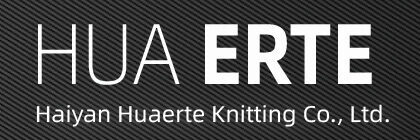
Compression socks have been gaining popularity in recent years as an effective method for improving blood circulation, reducing swelling, and providing relief from various leg-related issues. As more people become aware of the benefits of compression socks, the market has expanded to offer various styles and lengths to cater to different needs. Two of the most common types are knee high and thigh high compression socks. In this comprehensive guide, we will discuss the key differences between knee high and thigh high compression socks and help you make the best decision for your legwear needs.
Introduction to Compression Socks
Compression socks are specially designed hosiery that applies graduated pressure on the legs to help promote blood flow, reduce swelling, and alleviate pain. They are made from a blend of elastic materials that provide a snug and supportive fit, while allowing for comfortable movement. Compression socks are often recommended by healthcare professionals for individuals experiencing a wide range of leg-related issues, such as swelling, varicose veins, and chronic venous insufficiency.
There are various levels of compression available, measured in millimeters of mercury (mmHg), with higher levels providing more pressure. It is important to consult with a healthcare professional to determine the appropriate level of compression for your specific needs. In general, compression socks are available in mild (8-15 mmHg), moderate (15-20 mmHg), firm (20-30 mmHg), and extra firm (30-40 mmHg) compression levels.
Knee High Compression Socks: Benefits and Uses
Knee high compression socks are designed to provide coverage and support up to just below the knee. They are ideal for individuals who experience swelling, pain, or discomfort in the lower legs and feet. Some of the key benefits of knee high compression socks include:
- Improved Blood Circulation: Knee high compression socks apply graduated pressure to the lower legs, which helps promote blood flow back to the heart. This can help reduce the risk of blood clots and alleviate symptoms of various leg-related issues, such as swelling and pain.
- Reduced Swelling: By promoting blood circulation, knee high compression socks can help reduce swelling in the lower legs and feet. This can be particularly helpful for individuals who spend long periods on their feet or experience swelling due to medical conditions.
- Enhanced Athletic Performance: Many athletes, such as runners and cyclists, wear knee high compression socks to improve blood flow and reduce muscle fatigue during exercise. This can lead to enhanced performance and faster recovery times.
Thigh High Compression Socks: Benefits and Uses
Thigh high compression socks extend from the foot to the upper thigh, providing additional coverage and support compared to knee high compression socks. They are often recommended for individuals who experience swelling, pain, or discomfort in the upper legs or thighs. Some of the key benefits of thigh high compression socks include:
- Increased Blood Circulation: Thigh high compression socks apply graduated pressure to the entire leg, promoting blood flow back to the heart. This can help reduce the risk of blood clots and alleviate symptoms of various leg-related issues, such as swelling and pain, in both the lower and upper legs.
- Reduced Swelling: By promoting blood circulation throughout the entire leg, thigh high compression socks can help reduce swelling in both the lower legs and thighs. This can be particularly helpful for individuals who experience swelling due to medical conditions or spend long periods on their feet.
- Enhanced Athletic Performance: Similar to knee high compression socks, thigh high compression socks can improve blood flow and reduce muscle fatigue during exercise, leading to enhanced performance and faster recovery times.
Key Differences between Knee High and Thigh High Compression Socks
There are several key differences between knee high and thigh high compression socks that you should consider when choosing the best option for your needs.
- Coverage: The most obvious difference between knee high and thigh high compression socks is the area of coverage. Knee high compression socks provide support up to just below the knee, while thigh high compression socks extend coverage to the upper thigh.
- Support: Thigh high compression socks offer additional support for the upper legs and thighs, which can be beneficial for individuals who experience swelling, pain, or discomfort in these areas.
- Application: Knee high compression socks are generally easier to put on and take off, as they require less effort to pull up the leg. Thigh high compression socks can be more challenging to apply, particularly for individuals with limited mobility or flexibility.
- Aesthetic Preference: Some individuals may prefer the appearance of knee high compression socks, as they are less noticeable under clothing. Thigh high compression socks can be more visible, particularly when wearing shorts or skirts.
Factors to Consider When Choosing between Knee High and Thigh High Compression Socks
When deciding between knee high and thigh high compression socks, there are several factors to consider in order to make the best decision for your needs.
- Medical Needs: Consult with a healthcare professional to determine which type of compression sock is best suited for your specific medical needs. Individuals with lower leg issues may benefit from knee high compression socks, while those with upper leg issues may require the additional support provided by thigh high compression socks.
- Comfort: Choose a compression sock that provides a comfortable fit and does not cause irritation or discomfort. This may require trying on different styles and sizes to determine the best option for your needs.
- Activity Level: Consider your daily activities and exercise routines when choosing between knee high and thigh high compression socks. Athletes and individuals who spend long periods on their feet may benefit from the additional support provided by thigh high compression socks.
- Aesthetic Preference: If appearance is a concern, consider which style of compression sock you prefer and how it will look under your clothing.
How to Properly Wear and Care for Your Compression Socks
Proper use and care of your compression socks can help ensure they provide optimal support and last as long as possible.
- Application: When putting on your compression socks, start by turning them inside out up to the heel. Then, place your foot inside the sock and gently pull the sock up your leg, smoothing out any wrinkles as you go. Be sure to avoid rolling or folding the sock, as this can cause uneven pressure distribution.
- Fit: Your compression socks should fit snugly without causing discomfort or irritation. If your socks are too tight, they may restrict blood flow and cause additional issues. If they are too loose, they may not provide the necessary support.
- Washing: To maintain the elasticity and effectiveness of your compression socks, wash them according to the manufacturer’s instructions. In general, it is recommended to hand wash compression socks in cold water with a mild detergent and air dry them away from direct sunlight.
- Replacement: Compression socks lose their elasticity and effectiveness over time. It is generally recommended to replace your compression socks every 3-6 months, depending on how often they are worn and washed.
Medical Conditions That May Benefit from Compression Socks
Knee high and thigh high compression socks can provide relief and support for various medical conditions, including:
- Varicose Veins: Compression socks can help reduce the symptoms of varicose veins by promoting blood flow and reducing pressure on the veins.
- Deep Vein Thrombosis (DVT): By improving blood circulation, compression socks can help reduce the risk of blood clots and alleviate symptoms of DVT.
- Chronic Venous Insufficiency (CVI): Compression socks can help improve blood flow in individuals with CVI, reducing swelling and discomfort.
- Lymphedema: Compression socks can help reduce swelling and manage symptoms for individuals with lymphedema, a condition where excess fluid accumulates in the tissues.
- Pregnancy: Pregnant women often experience swelling and discomfort in their legs, and compression socks can help alleviate these symptoms by improving blood circulation.
- Diabetes: Compression socks can help reduce the risk of developing ulcers and other foot-related issues for individuals with diabetes by improving blood flow and reducing pressure on the feet.
It is important to note that compression socks should not be used as a substitute for medical treatment and consultation with a healthcare professional.
Popular Brands Offering Knee High and Thigh High Compression Socks
There are various brands offering high-quality knee high and thigh high compression socks. Some of the most popular options include:
- Sigvaris: Sigvaris offers a range of compression socks in different styles and compression levels, including knee high and thigh high options.
- Jobst: Jobst offers a variety of compression socks for different needs, including knee high and thigh high options in various compression levels.
- CEP: CEP offers compression socks specifically designed for athletes, with both knee high and thigh high options available.
- Bauerfeind: Bauerfeind offers compression socks for various medical conditions, with both knee high and thigh high options available.
- Medi: Medi offers a range of compression socks in different styles and compression levels, including knee high and thigh high options.
Frequently Asked Questions about Knee High vs Thigh High Compression Socks
- Are knee high or thigh high compression socks better? The best option depends on your specific needs and medical conditions. Knee high compression socks are ideal for individuals experiencing issues in the lower legs and feet, while thigh high compression socks offer additional support for the upper legs and thighs.
- Are thigh high compression socks more difficult to put on? Thigh high compression socks can be more challenging to put on than knee high compression socks, particularly for individuals with limited mobility or flexibility.
- Can compression socks be worn during exercise? Yes, compression socks can be worn during exercise to improve blood flow and reduce muscle fatigue.
- How often should compression socks be replaced? Compression socks should be replaced every 3-6 months, depending on how often they are worn and washed.
Conclusion: Making the Right Choice for Your Legwear Needs
Knee high and thigh high compression socks both offer various benefits and uses, and the best option for your needs depends on several factors, including medical conditions, comfort, activity level, and aesthetic preference. By understanding the key differences between knee high and thigh high compression socks and considering these factors, you can make an informed decision and choose the best legwear option for your needs.
Remember to consult with a healthcare professional to determine the appropriate level of compression and to ensure that compression socks are the right choice for your specific medical needs. Proper use and care of compression socks can help ensure they provide optimal support and last as long as possible. By prioritizing your leg health and choosing the right compression socks, you can improve your overall well-being and quality of life.
Welcome to consult us to make your custom socks.





